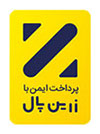Revisiting one of my favourite topics – love for books, and why reading is so beneficial to a child’s language (and general) development!
1 – Reading time is bonding time
Sitting down to read to your son or daughter gives you the opportunity to bond with them in a very special way. In a bilingual family this is an excellent opportunity for each parent to have some one-to-one time in their own languages.
2 – Memories for life
Reading a book together creates memories for life. My eldest daughter loved the “Three Billy Goats Gruff” story and I must have told it to her hundreds of times. We still remember the different voices of the goats and how very scary the troll under the bridge was. I am now looking forward to reading the same story with even more gusto to my future grandchildren!
3 – Routine
Books are a great way to introduce routines into family life: bedtime reading being an excellent example of this. The story signals the time to go to sleep. Why not introduce regular reading at other times as well? You could start a ‘Sunday Story Time’ routine, where you read books in the different family languages. Or, you could make reading a book part of your holiday traditions or take a book with you to the park and read outside (weather permitting – I live in England!)
4 – Reading calms the mind
Reading at bedtime is the typical way to calm down, but it is an excellent way of relaxing in other situations as well. Books are the perfect counterweight to the ever-increasing amount of electronic devices children are surrounded by. With this I am not condemning ebooks – they to have their place (especially for avid readers going in holiday!), but I do think that a break from devices can only be good for all of us. Also, as one child quite rightly pointed out, books do not come with commercials!
5 – Real books are so much more than just text
Paper books can become life companions. I am not sure a child would hug an ebook reader, but I have often seen children embrace real books and excitedly look forward to the story. A paper book you can enjoy in so many ways. Think of the noise of opening a real book for the first time and the sound of turning its pages. Imagine the smell of a new book or perhaps your mother’s cooking book. Knock on a book’s cover to ask it to let you in and feel the smoothness (or roughness) of its pages … then immerse yourself in its world. (Sorry, didn’t mean to go waxing lyrical, but this is what happens with books!)
6 – Learning about your children’s interests
You will initially be the one to choose which book you are reading for your child, but soon enough your little ones will have their own favourites. By their choices, you get an insight into what lies close to their heart. You can then build on this and find more books and other resources in all languages your child is learning.
7 – Bringing out emotions
It is not always easy for children to express their emotions. A book that allows them to speak their mind through a character in the book can be the way to tackle emotionally difficult situations. By asking your child to describe how a character might think about a certain situation, you will learn a lot about how your child feels.
8 – Approaching difficult topics
Closely related to the above, a book can be the ideal way to start a discussion on a topic which you, your child or both of you find hard to speak about. There are excellent children’s books which tackle difficult issues such as bullying, racial discrimination, drugs and abusive behaviour, and are the perfect introductions to further conversations.
9 – Expands the vocabulary
It is a given that reading is an excellent way of teaching your children new words in the languages they are learning. If you happen to be the minority language parent or maybe even the only person talking your language to your child, it is not always easy to find a natural way of using certain words in everyday discussions. Reading about a topic is a good way of introducing new vocabulary. In a book, words get a wider context, which helps to memorise them, as do pictures that go with the text.
10 – Improves communication skills
With a more extensive vocabulary, your children can express themselves better in different situations. For bilingual children, this makes reading particularly important for the exposure to the minority language, as they might not come in contact with so many different speakers of the language in their day-to-day lives.
11 – Spurs the imagination
Fictional characters, adventures and places inspire children’s imagination, making them more creative in their own language use as well as writing. I am sure several imaginary friends have had traits of characters from books!
12 – Opens your mind
Reading about different people, places and ways of living also helps children (and adults for that matter) be more open-minded about new concepts and ideas. The goal for most multilingual families is to raise happy, tolerant, global citizens – being open-minded is at the heart of such a quest.
13 – Develops empathy
By reading about others’ experiences, children learn how to put themselves into other people’s shoes. Their understanding of what someone is feeling improves every time they get emotionally involved in book characters’ lives. This helps them be more empathetic in real life.
14 – Reduces anxiety
Children often worry when they are about to experience something new, which is understandable. There are the big occasions in life such as the first day of school, a new sister or a brother or a move to a different country or a different house down the road, or simply the first night away without mum or dad. Reading about how other children have coped in these situations allows your child to feel more relaxed and prepared for the situation.
15 – Books are good company
Children who have learnt to love books will always have company. When they learn to read themselves, books are the friends that are always there for them, ready to keep them entertained. A child that enjoys reading rarely uses the words “I’m bored!” Books are also very convenient: easy to take with you anywhere, hard to break and do not need batteries or charging!
16 – Reading is the key to other learning
A fondness for books is an invaluable help when your child goes to school. Anyone who has a love for reading has an innate thirst of knowledge, which is beneficial for learning other subjects such as science, maths, history, geography and other languages.
17 – Better writing skills
The more you read the better you will be at writing. This is something that is important especially for a child’s minority language, which usually is not trained as much as the language used at school. Seeing words in a written form is vital for learning to write.
18 – Improved concentration
Children who love reading can concentrate on their tasks better than those children who are less ardent readers. Never be upset with your children if they cannot hear you when they are immersed in a book – it (usually) means that their ability to concentrate is top notch!
19 – Brain training exercise
Reading is a complex task that activates several areas of the brain and as such has a positive impact on them. Research has shown that reading an interesting book can cause heightened connectivity in the brain.
20 – Enhanced logical reasoning
When children read books, they learn to understand abstract scenarios as well as cause and effect situations. Both of these skills help them in logical reasoning, which comes handy in many aspects of their day-to-day lives and even more so at school and later on in working life.
21 – Wider cultural understanding
Culture and language go hand in hand. Reading is particularly beneficial for understanding the minority language culture, as there might not be as many opportunities to experience the culture first hand.
22 – Love for reading will be passed on
Children who have learnt to treasure books will, in time, pass this passion on to their own children. A benefit that moves on from one generation to another – how good is that!
23 – Last but not least: reading is FUN
Books are a fun way to explore the world, to learn new and exciting things, to let your imagination loose or just to enjoy a well-written story or poem. When you have fun, you are motivated to do more. The more you read, the better your language skills get!

 Persian
Persian  English
English  Arabic
Arabic 


